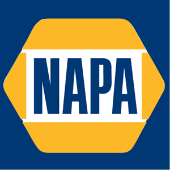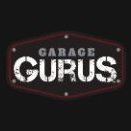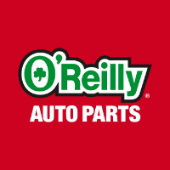-
Welcome to Auto Parts Forum
Whether you are a veteran automotive parts guru or just someone looking for some quick auto parts advice, register today and start a new topic in our forum. Registration is free and you can even sign up with social network platforms such as Facebook, X, and LinkedIn.
Turbochargers and GDI: A Winning Combination
-
Similar Topics
-
By NAPA
Brad Sweet and the
link hidden, please login to view No. 49 team returned to action for the 2024 season in spectacular fashion, winning at the DIRTcar Nationals at Volusia Speedway Park in Florida.
Four nights of racing began on Wednesday with the Big Cat showcasing his skills right from the start. The Kasey Kahne Racing driver qualified fourth in Flight A with a blistering time of 13.513 seconds. He continued the momentum in his heat race, securing a second-place finish and guaranteeing him a spot in the Fast Pass Dash. Sweet dominated the dash, picking up the win after starting on the pole. In the first main event o f 2024, the NAPA No. 49 machine proved unstoppable for 25 laps, earning the win and solidifying Sweet’s status as a giant of the sprint car world.
On Thursday night, however, a different story unfolded for the five-time champion. Sweet qualified fifth in Flight B, posting a solid time of 13.430 seconds, but his heat race presented a challenge. He started third but slipped to fourth, relegating him to a 14th-place starting position in the feature. He ultimately finished 15th, determined to bounce back on Friday night.
On Friday, the NAPA team hit the reset button and prepared for another shot at a win. Sweet posted a time of 13.359 seconds in qualifying, securing the third spot in Flight B and setting a strong tone for the evening. During heat race action, competitor David Gravel ran Sweet up the track, forcing him over the cushion and into the brakes of the No. 49 machine. He regained momentum, though, and ultimately finished third after starting second. Friday’s feature race truly highlighted Sweet’s racing prowess as he battled his way through the field from a 10th-place start to finish on the podium in third.
On the final night of the DIRTcar Nationals, the NAPA No. 49 team had one last shot at a $20,000 payday. The Big Cat hit the charts at 13.452 seconds in qualifying, placing him fifth. In his heat race, Sweet charged from third to second, placing him in the dash. Although he did not advance from his eighth-place starting spot in the dash, Sweet continued undeterred into the feature race. He stood out among the fierce competition, climbing from an eighth-place starting spot to another podium finish of third. Sweet and the NAPA team ended the weekend third in overall event points.
Next up for the Sweet and the No. 49 team is the start of the High Limit Racing season at East Bay Raceway Park in Tampa.
Start / Finish:
Wednesday, Feb. 7: 1 / 1
Thursday, Feb. 8: 14 /15
Friday, Feb. 9: 10 / 3
Saturday, Feb. 10: 8 / 3
Next Race: Monday, February 12, East Bay Raceway Park, Tampa, FL
How to Watch or Listen:
link hidden, please login to view NAPA:
link hidden, please login to viewBrad Sweet: link hidden, please login to view
Kasey Kahne Racing: link hidden, please login to view The post
link hidden, please login to view appeared first on link hidden, please login to view.
link hidden, please login to view -
By Counterman
GB Reman announced the release of 17 gasoline-direct-injection (GDI) part numbers including GDI injectors, seal kits, fuel lines and a premium GDI seal-replacement tool kit.
The additional part numbers enhance GB Reman’s remanufactured GDI program with added coverage for more than 2,300 unique vehicle applications and more than 24 million vehicles in operation.
“We are very proud of this release, especially with the highly anticipated expansion of our industry-leading GDI program,” said Joe Evert, director of engineering & operations. “Our commitment to quality is the cornerstone of our GDI program’s popularity. We take great pride in delivering top-notch products, rigorously tested to ensure superior performance and backed by a stellar warranty for peace of mind. Our team of experts and our dedication to excellence sets us apart, making GB Reman the trusted choice for those who demand the best in performance, reliability and customer service.”
GDI Fuel Injectors & Seal Kit
GB Reman’s line of remanufactured fuel injectors are remanufactured using a proven 15-step process at its state-of-the-art facilities in Long Beach, California, according to the company.
All injectors include new external seals, O-rings and filters. In addition, all GDI injectors include pre-installed combustion fuel-inlet seals and necessary hardware to ensure a complete and trouble-free installation.
Once remanufactured, each injector is 100% tested under multiple operating conditions to ensure it meets or exceeds OEM specifications for flow rate, spray pattern, coil resistance, form, fit and function.
View the company’s
link hidden, please login to view for a complete list of part numbers and application data. GDI Fuel Injector Multi-Packs
GB Reman released two GDI fuel-injector multi-packs (PNs: 835-11156PK, 835-11158PK) covering 495 unique vehicle applications and more than 6 million vehicles in operation.
Replacing GDI injectors in sets ensures balanced performance, consistent fuel atomization, and prevents drivability issues by maintaining uniformity across all cylinders. While it may involve a higher initial cost, replacing injectors in sets promotes cost-effectiveness in the long run by reducing the likelihood of future repairs and optimizing overall vehicle longevity.
GDI Fuel Lines
GB Reman released six GDI fuel lines (PNs: 892-001, 893-001, 893-002, 893-003, 895-001, 895-002) covering more than 1,000 unique vehicle applications and more than 9 million vehicles in operation.
GDI fuel lines are responsible for delivering pressurized fuel from the fuel tank to the GDI injectors located near the combustion chamber of each cylinder. They play a crucial role in ensuring that the engine receives the right amount of fuel at the right pressure for efficient combustion. The fuel lines are designed to withstand the high operating pressures associated with GDI systems, which can be significantly higher than those in traditional port fuel-injection systems.
Premium GDI Seal Tool Kit
GB Reman released its new premium GDI seal tool kit (PN: GBTK-0001). The tool kit can be utilized to reseal more than 100 unique GDI injectors, covering more than 70 million vehicles in operation, according to the company.
As part of any GDI injector replacement procedure, all injectors on the fuel rail must have their injector seals replaced. While replacing GDI combustion seals is not technically challenging, proper tools and procedures are necessary to ensure that the seals function properly. For
link hidden, please login to view, visit the GB Reman link hidden, please login to view. The post
link hidden, please login to view appeared first on link hidden, please login to view.
link hidden, please login to view -
By Garage Gurus
For vehicles equipped with a gasoline direct injection (GDI) system, a buildup of carbon on the intake valves can cause problems ...
-
By OReilly Auto Parts
Subscribe:
link hidden, please login to view Facebook: link hidden, please login to view Instagram: ... 
-
By Garage Gurus
Visit Garage Gurus
link hidden, please login to view for more tips and information on diagnosing and troubleshooting engine problems in ...
-





Recommended Posts
Create an account or sign in to comment
You need to be a member in order to leave a comment
Create an account
Sign up for a new account in our community. It's easy!
Register a new accountSign in
Already have an account? Sign in here.
Sign In Now